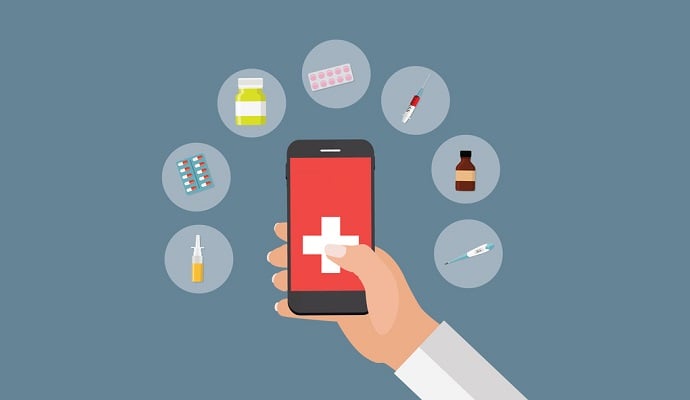Each new year introduces the latest challenges and complexities related to the healthcare industry. These challenges include MIPS, a switch from FFS to Value-Based Reimbursement, Meaningful Use, ACA, HIPAA, ACOs, ICD-10, PQRS, Bundled Payments, declining reimbursement rates, or increased patient payment responsibilities, to name a few. Because of these changes, many practices partner with an outsourced medical billing or revenue cycle management firm.
In-house medical billing may seem like the path to save your practice money. But is it saving you money? It is essential to know how much in-house medical billing is costing you to see if you'd benefit from outsourcing your medical billing to save your practice time and money.
Before choosing a medical billing and reimbursement path, skim this list to see your practice's costs:
- Salary and wages:
- Your total cost includes the salary and all additional annual monetary payments of individuals involved in the billing and reimbursement departments. Staff receiving these annual payments include:
- Certified coders
- Payment posters
- Eligibility verification staff
- Staff assigned to answer patient account phone calls
- Staff assigned to follow up or appeal denied claims
- Staff assigned to check the status of unresolved claims
- Staff responsible for sending out patient statements
- Staff assigned to balance daily revenue
- Your total cost includes the salary and all additional annual monetary payments of individuals involved in the billing and reimbursement departments. Staff receiving these annual payments include:
- Staff benefits:
- How much is vacation, health insurance, retirement plans, social security, and unemployment costing?
- These may equal between 20%-30% of salary and wage total.
- Training costs:
- Coding and reimbursement rules and regulations are continuously changing and may transform year over year.
- For example, the impact of ICD-10 coding and the transition from fee-for-service to value-based reimbursement are some of the most significant financial challenges that health providers will face.
- Coding and reimbursement rules and regulations are continuously changing and may transform year over year.
- Space, real estate, opportunity costs:
- Practices can eliminate the space occupied by internal billing staff or use it as revenue-producing space, such as an extra exam room.
- Staffing turnover:
- Predictive Index has the formula to calculate employee turnover cost:
- Take your vacant position coverage cost
- Add the cost to fill the vacant position
- Add the cost of onboarding and orientation
- Add the productivity ramp-up cost
- Multiply the number of employees lost in that position per year
- Multiply by 12
- That number is your annual turnover rate
- To clear that up, an article posted in October 2019 from the Bureau of Labor Statistics claimed that the average annual turnover rate in the United States is 44.3%. A percentage that high can be monetarily detrimental for small or newer businesses.
- Predictive Index has the formula to calculate employee turnover cost:
- Billing staff supervision:
- Physicians and practice managers often note that handling staff and personnel issues can be one of the least desirable medical practice duties. You should consider the cost of time required to manage billing personnel and related matters. If the physicians perform the function, opportunity costs include lost patient care revenue.
- EDI costs, electronic remits, eligibility verification capabilities:
- Practices should send most medical claims electronically.
- You should set your practice up to receive electronic remittance advice and electronic funds transfers instead of receiving paper EOBs and checks.
- Patient statement costs:
- These costs include printing, postage, and processing.
- Technology costs:
- EHR, EMR, AM, PM systems have fees for the use of software, hardware, upgrades, support, annual maintenance, IT cases, and interfaces.
- Practices with antiquated systems incur unnecessary costs because of inefficiencies in using labor, space, and material.
- Practices will need to transition to certified EHR systems and show meaningful use or face reimbursement penalties.
- Office equipment:
- Billing staff requires computers, phones, desks, chairs, fax machines, copiers, and other standard office equipment.
- Office supplies:
- Standard office supplies can include paper, pens, postage, envelopes, copies, faxes, printer supplies, and anything else used during the billing process.
- Communication costs:
- Billing staff incurs costs related to extra phone lines and long-distance charges.
- Theft or embezzlement:
- Internal billing processes may not provide proper separation of revenue functions.
- Billing errors:
- Studies show that practices lose nearly 25%-30% of all medical practice income because of improper billing. Just over 59% of in-house billers do not review EOBs, and 55% of in-house billers have never appealed denied claims.
Illustrative Example—Internal Billing Department Cost:
- Error Free Internal Billing Department
In the following scenario, the medical practice "Best Medical," with three providers, collects $1,000,000 per year and needs two billing clerks to handle this activity level. Each billing clerk earns an average annual salary of $25,000. The billing clerks occupy an area that is 150 square feet of space, and the space rents for $17 per square foot. Each of the clerks attends a billing seminar every other year, each taking part in a quarterly online webinar. The average length of employment for each clerk is two years. The staff is top-notch and much better than the industry on average because they make no medical billing errors. The top-notch team will require very little supervision, and the practice experiences no theft or embezzlement. The typical cost associated with this first-rate internal billing function may include:
Medical Practice "Best Medical"
Annual Expenses - Billing Functions
Salary and Wages...............................................................$50,000
Employee Benefits..............................................................$12,500
Training Costs.....................................................................$2,500
Real Estate & Occupancy...................................................$3,000
Staffing Turnover Costs......................................................$2,000
Equipment Cost and Office Supplies..................................$1,300
Communication Costs.........................................................$2,000
EDI Costs............................................................................$1,800
Statement Costs.................................................................$2,400
Technology Costs................................................................$13,200
Total Internal Cost of Billing Functions......................................$90,700
Cost as a Percentage of Collections................................9.07%
- Above Average Internal Billing Department
The above example assumes the internal billing department does not make any mistakes or errors. This scenario is unlikely as studies show that the average internal billing department makes errors resulting in 25%-30% of practice income losses. Using the same assumptions as of the above case, assume that the internal billing department of medical practice "Above Average Medical" is reasonably competent (instead of perfect) and only makes errors that result in lost revenue of 5% to the practice. As illustrated below, even a slight medical billing error rate can substantially increase the cost of the internal billing function:
Medical Practice "Above Average Medical"
Annual Expenses - Billing Functions
Total Internal Cost of Billing Functions, as stated above....$90,700
Lost Revenue as Result of 5% Errors................................$50,000
Total Internal Cost of Billing Functions......................................$140,700
Cost as a Percentage of Collections.......................................14.07%
Cost of Internal vs. Outsourced Medical Billing
Some medical practices automatically assume that outsourcing the billing functions would be more expensive than doing billing internally. RCM or Billing service firms typically charge rates from 3% to 7% of net collections. A report conducted by National Healthcare Exchange Services reports that physician practices are spending as much as 14% of their total revenue to ensure accurate reimbursement from health insurers. As shown above, the outsourcing fees may be less than the prices the practice may incur to perform billing in-house. The cost of medical billing errors can be very expensive to the average medical practice. Suppose a medical billing firm can cause even a slight increase in the medical's quality billing process. In that case, the practice may realize a double benefit in increased revenue and decreased total overhead expenses.
Because of economies of scale, professional medical billing firms can afford to charge less. If the billing firm can collect more for the practice, the cost as a percentage of total collections can be less because entire collections have increased.
A recent MGMA study found practices see measurably improved performance with outsourcing billing. In fact, for practices that switched from billing in-house to outsourcing with a quality firm:
- 73% realized a reduction in AR days and achieved higher collections
- 59% decreased denied claims,
- 59% reported access to better reporting and analytical tools.
However, one could assume that the practices that switched made the switch because they may not have been happy with the internal process. The improvements are impressive, and the switch translates into increased revenue for those practices that switched.
Given the recent increase in industry complexities, you can also use the partner RCM firm as an additional resource to address or assist with new rules and regulations.
Outsourcing medical billing services may not be the answer for everyone. Still, before a medical practice dismisses the idea altogether, it would be prudent to calculate the cost to do the billing in-house. The practice may be in for a surprise.
ECLINICALWORKS SOLUTIONS
eCW Training, Optimization, & Support
Struggling to keep up with upgrades and implement new features? We can help.
References
- Article by Keith Lage, CPA, is Director of Business Development for Revele, updated by Sydney Powell (marketing, Revele)
- http://www.claimcare.net/medical-billing-blog/how-much-is-in-house-medical-billing-really-costing-you#:~:text=When%20outsourced%2C%20the%20fee%20is,will%20immediately%20outweigh%20its%20costs.
- http://ahsrcm.com/assets/AHS_Whitepaper_Web_v2.pdf
- https://www.predictiveindex.com/blog/how-to-calculate-employee-turnover-cost/
- https://www.creditdonkey.com/average-turnover-rate.html







